Strolling in the Parks of Riga
Parks on the Right and Left Bank of the Daugava
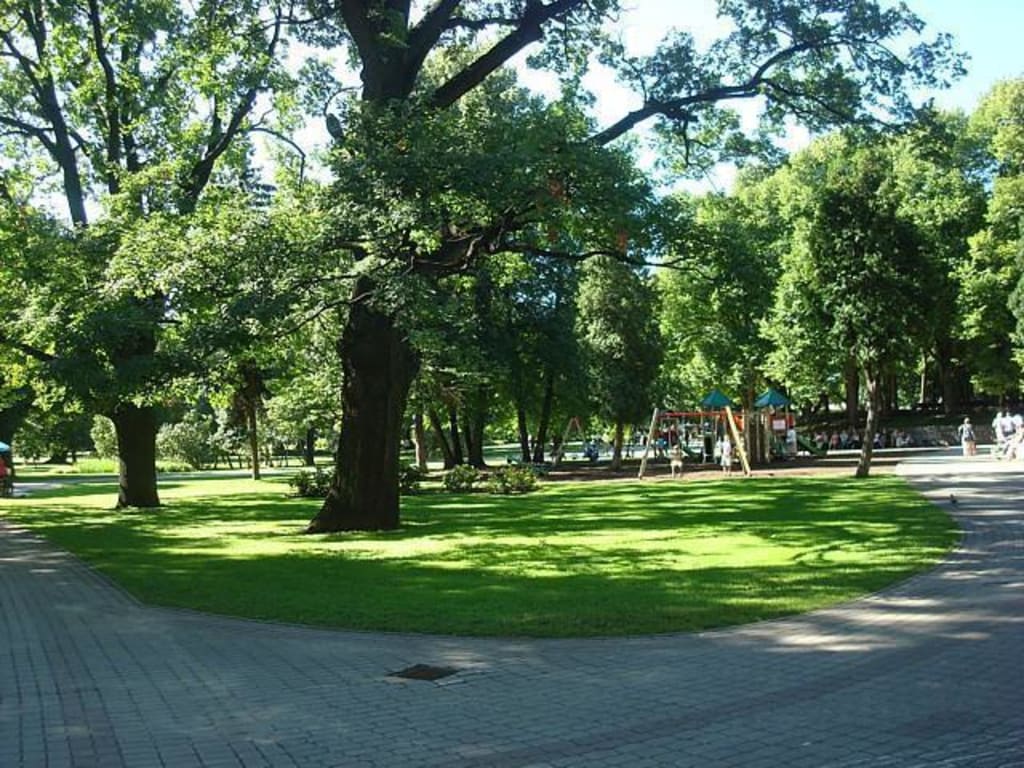
The capital of Latvia, Riga is divided into two banks by the Daugava River. On the right bank is the city side and on the left bank the suburban side known as Pardaugava or Over the Daugava. Both sides have lovely, green and lush parks. Some of the better-known ones I have written about.
Vermanes Darzs or Vermanes Garden is located in the very center of Riga. It is the second oldest park with an area of 5 hectares.
In 1812 a large fire destroyed all of Riga’s right bank suburbs and in 1813 they established the Suburb Planting Committee, which was in operation until 1879 when the Riga Garden Association was started. It was decided that in all of the empty spaces of the city parks should be designed and to encourage citizens to help anyone who could donate 1 Lats toward this goal would be allowed to plant one tree. One of the most generous donators was the widow of Kristian Heinrich Vermanis, Anna Gertrud Wohmann, who in 1817 saw to it that exotic trees were planted and a restaurant was built on land surrounding her estate so that the people of Riga would have a place for rest and recreation. She left the land to Riga in her will with the directions that the land would not be divided, sold to private persons and used only for the purpose of a place of leisure for the citizens of Riga.
Vermanes Garden was opened to the public on June 8, 1817. Anna’s son the Prussian General Consul J. Vermanis saw to it that his mother’s directions were obeyed and continued to help develop the park. A restaurant and a band shell were built. At the beginning of the 20th-century landscape architect, G. Kufalt saw to it that the park was surrounded by a metal fence and that within it were six wooden sculptures and three huge vases which reflected ancient Greek and Roman mythological characters – the muses and goddesses turning the park into a romantic place for rest. Many special events took place here as well. On April 10, 1927, in the Large Pavilion in Vermanes Garden the first auto expo ever in the Latvian Republic took place. Attracting 2000 visitors the very first day.
Vermanes Garden Fountain

Among the statues in the park is a memorial to Krisjanis Barons who was a writer, poet, and publicist and is considered the Father of Latvian national songs or, as they’re called in Latvian, Dainas.
Krisjanis Barons Memorial
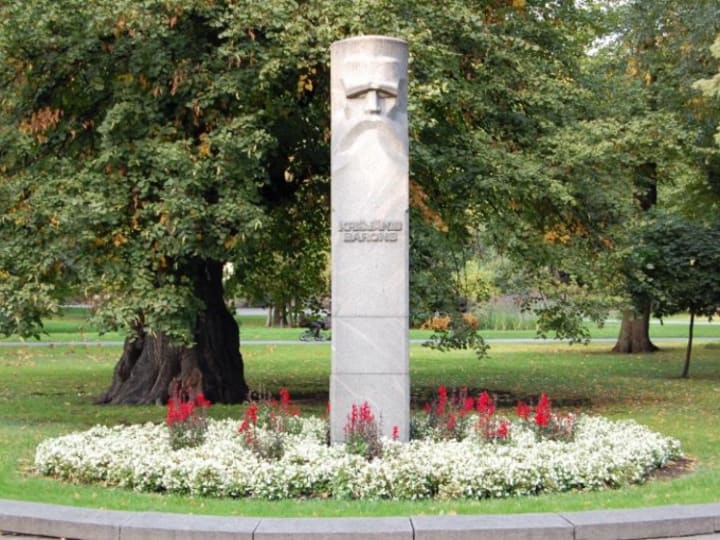
An interesting statue to Karlis Padegs stands right outside the park. He was a legendary figure in the Latvian art world and a famous painter.
Karlis Padegs
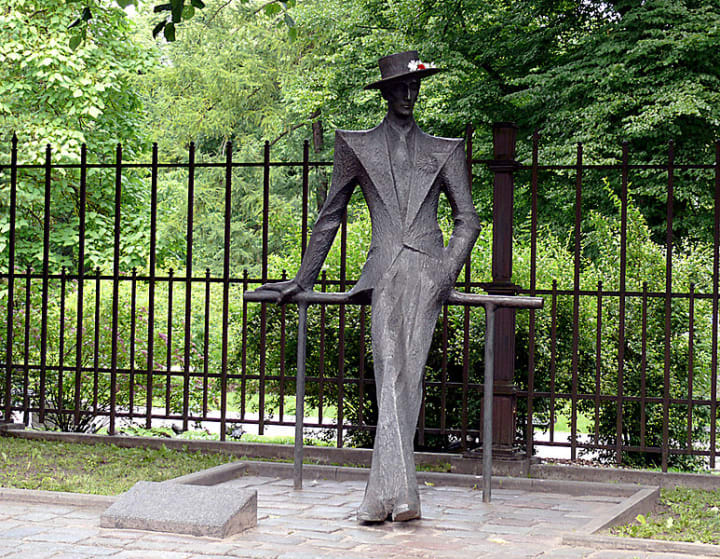
Kronvalda Park is part of the Old Town’s planted greenery by the side of the Riga Canal which divides the park into two parts. The park is 11.92 hectares wide. At this time, the park has around 104 imported tree and bush species.
Kronvalda Park
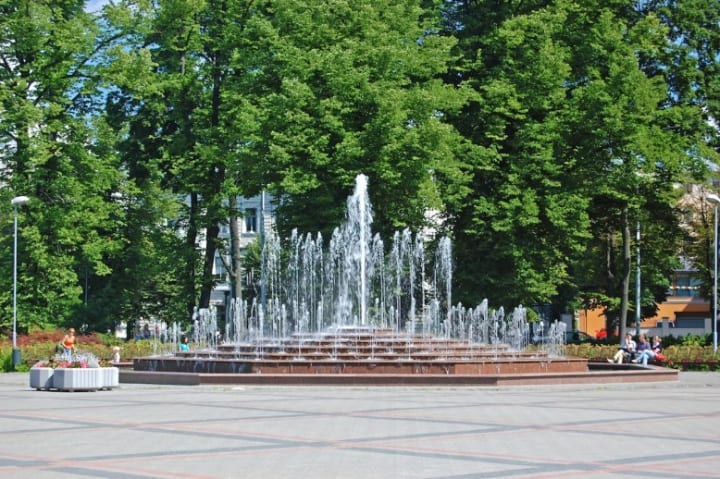
Originally this park was called Strelnieku or Riflemen’s Garden and the landscape architect was George Kufalt. In the second half of the 19th century and the beginning of the 20th-century material with which to build up the park was delivered in large boats upon the canal. A large amount of attention was paid to the greenery and flowers which were planted here.
Riga Canal in Kronvalda Park
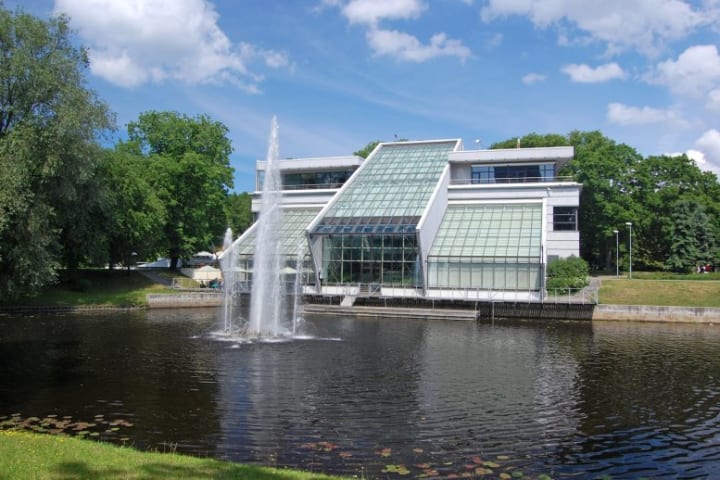
At one time 2000 rose bushes grew here. A private Riflemen’s society building was erected and a shooting range and for a while only the members of this particular society could walk in this garden. It remained like this until 1927. Then in 1936 two bridges were built over the canal.
Alexander Pushkin
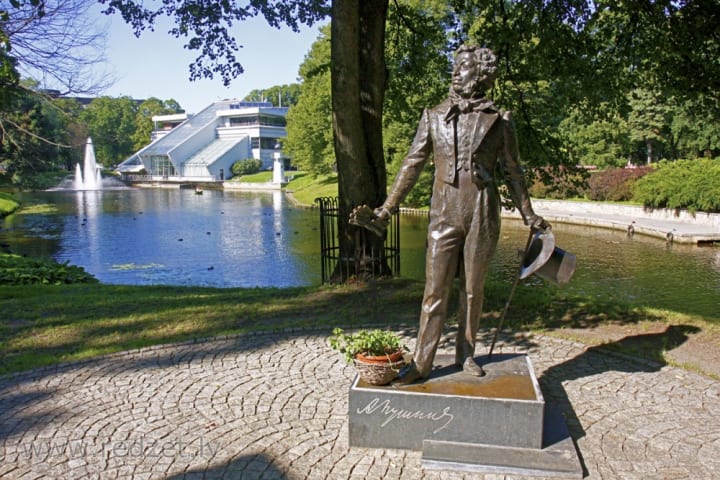
There is a statue in honor of Alexander Pushkin, a well-known Russian poet, playwright, and novelist of the Romantic Era. Many consider him to be the greatest Russian poet and the founder of modern Russian literature.
Andrejs Upitis
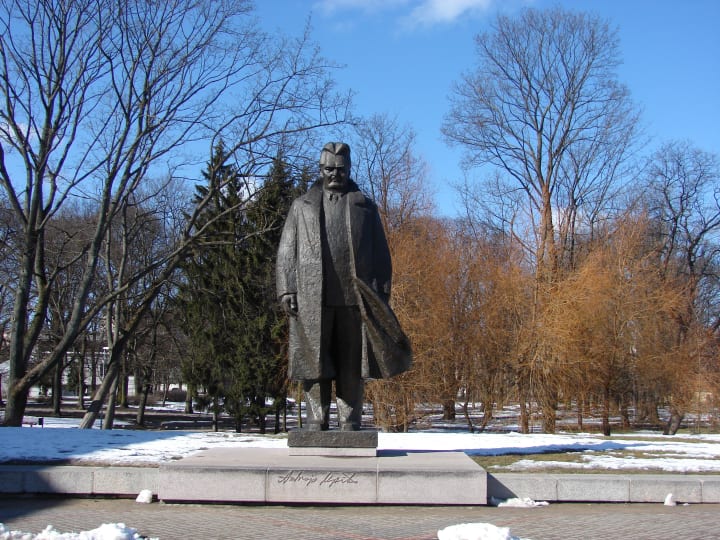
In 1977, in honor of the 100th anniversary of Latvia’s national writer Andrejs Upitis, a large monument was set up right next to the Riga Congress Hall. Today there is also a large modern fountain, a playground, roller-skating tracks, a cafe and an underground parking garage. In the summertime, people can boat on the canal or ride water bikes.
Esplanade
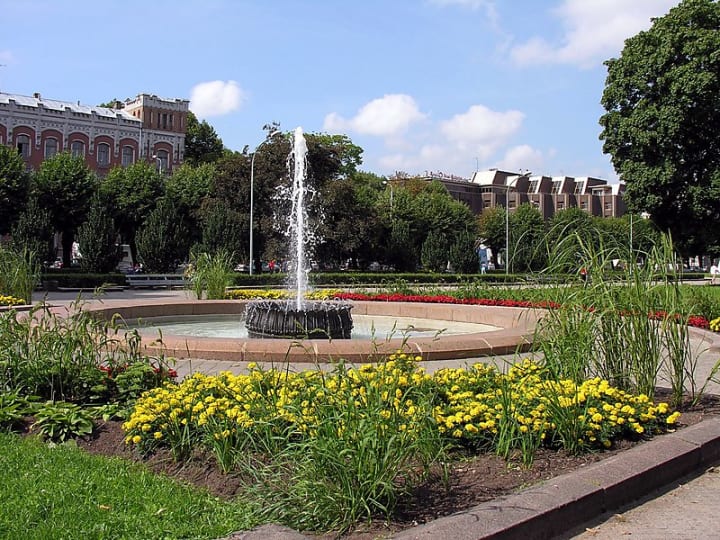
The Esplanade offers tall shady trees, grass, and lovely flowers and bushes.
Within the park are monuments honoring Oskars Kalpaks (a well-known Latvian Army Colonel and hero) and Rainis (a popular and well-known Latvian writer, playwright, translator, and poet).
Oskars Kalpaks

Rainis
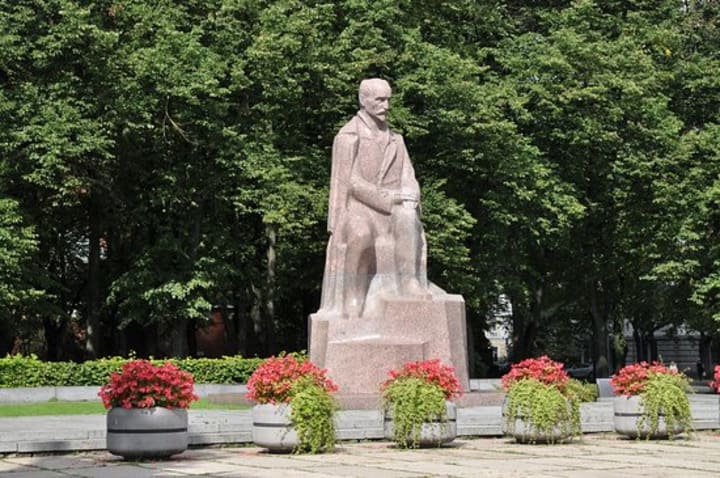
Surrounding the Esplanade are the Nativity of Christ Orthodox Cathedral, the Latvian National Museum of Art and the Latvian Art Academy. In the Middle Ages on this spot was Kubes Hill which was flattened out in the time from 1783 to 1784 and became a dirt field where Riga’s Army had their training and parades. Then in 1857 when Riga’s ramparts and bastions were knocked down the land was given to the city for the construction of buildings and streets. The stretch of land upon which Esplanade was built was left for the army and for other social events. On Riga’s 700 birthday in 1901 in Esplanade was an exposition highlighting the city’s development up to this time. In the wintertime, there is a skating rink in the park. Esplanades Park was formed by landscape architect Georgs Kufalts. It is a delight to walk around the paths, sit on the benches and in the summertime enjoy the fountains.
Latvian National Museum of Art
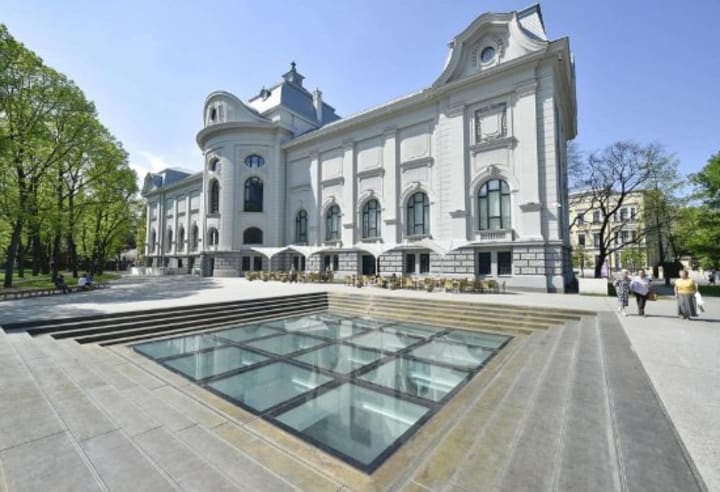
Viesturdarzs or Viesturs Garden was once known as Song Festival Park and is the oldest park in Riga and consists of 7, 60 hectares.
Viesturs Garden

It was designed by French architect A. Leblon in the18th century French and Holland styles. Paths bordered on both sides by Holland Linden trees, canals, and ponds. This park has a fascinating history as it was once known as the Garden of the Emperor and was formed first in 1721 by order of the Emperor of Russia's Peter I and was the first public garden in Riga. At this time it was located in an area called Petersala. The present location of this park is where Emperor Peter I had his summer palace – a light Baroque-style building. In front of it was a basin with fountains. It was dismantled in 1770. Today in the park one can see a large sculpture of two lions, a stone set up in honor of the 100th anniversary of the Riga’s first bicycling competition, a monument honoring Song Festivals and a massive gate known as Alexander’s Gate.
Alexander's Gate
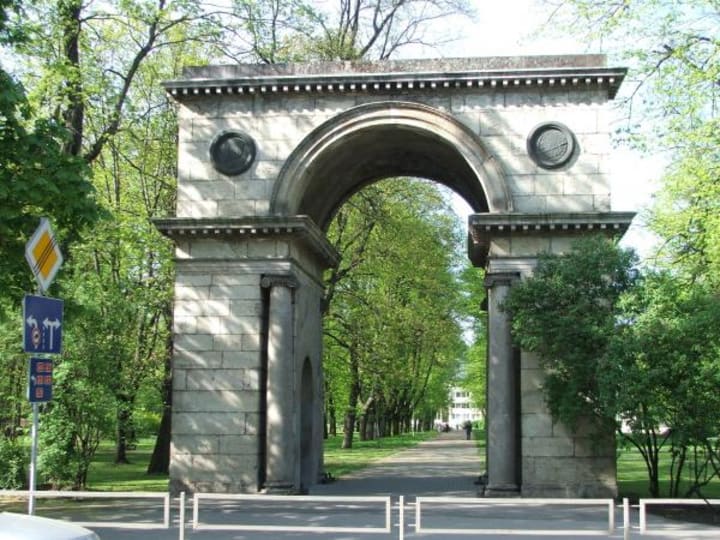
Lielie Kapi or Big Cemetery Park is a large park in which many famous Latvian writers, poets, composers, artists and many more well-known personalities are at rest. It is surrounded by many streets but most appropriately among the street are Moon Street and Peace Street.
It is owned by the Latvian Evangelical Lutheran Church. More than 10,000 Riga residents have found their forever home here. Here you can find incredible cemetery monuments which represent time periods starting from the XVIII century. You can wander along large avenues that go through the park or look at the monuments, mausoleums, and headstones which remain here. History is almost everywhere and it is a quiet and peaceful place where you can almost forget that city streets surround it and somewhere nearby there are crowds of people. However, it is a quieter place since it is on the outskirts of the city center. In the park, there are 60 different kinds of trees and bushes including a Japanese larch, a Holland linden, and a Crimea linden. In the summer this is a cool and shady place for walking and reflecting.
Big Cemetery Park

Here you can find 19 chapels, 242 monuments, 58 headstones, and 16 memorial burial places. In other words, it is like an outside museum and even though people tend to just walk through it as if it were just any ordinary park I love to wander about because there are so many fascinating things to see and discover. I once walked into a mausoleum that was crooked with age and saw a withered bunch of flowers still there and I wondered what stories they could tell me. And, yes, you do have the feeling that there are souls following you about and that they appreciate that you respect their resting places and don’t trample on them.
There is a lot of clean-up being done in this park and they hope to make it a Memorial Park, which will not only draw residents to walk about it but also tourists.
Arkadija Park

Arkadija Park is located on the Left Bank of the Daugava. It is like a large garden with many different paths, ducks swim in a stream that runs through there and there's even a waterfall. It became a popular place for city dwellers way back in 1794. At this time the park also featured festivals, theater performances, and even Latvia’s traditional Midsummer Celebration at the end of June.
Arkadija Park
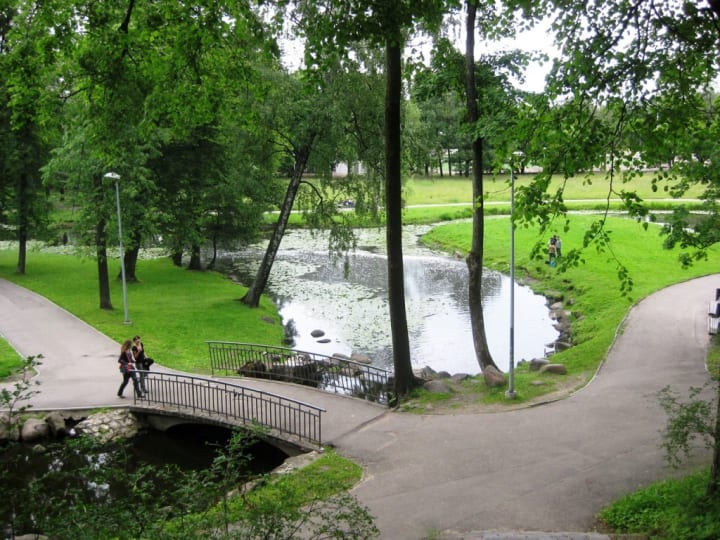
Back in 1852. the Prussian Counsel General H.K. Vermanis had a house built on top of a hillside along with a large greenhouse. In the greenhouse he grew peaches, apricots, grapes and some rare kinds of palms. Then in 1885 when this property became a park an outdoor stage was built for theater performances as well as a place for sports. It started becoming a popular place to get away from it all and relax.
The park had different owners until 1896 when the city of Riga purchased it. At that time since the park is located between the neighborhoods of Agenskalns and Tornakalns the park was given the name Tornakalna Park. Renovation on the park began in 1900. Across from the park there is a large pond whose source is a small river known as Marupite. At this time the course of this river was changed so that part of it also flowed through the park. Cascaded waterfalls, small bridges, and other things were created to make the park a lovely place. In 1910 a restaurant was built called “Arkadija”, which in 1958 became a movie theater. Finally, in 1911, the park was renamed Arkadija Park.
At present, the park has gone through many other changes along the way and is not very large but a wonderful place to walk through. There are many delightful sights like ducks swimming in Marupite which ends in a pond. During the spring it is a wonderful place to go to see nature come awake again and it almost seems like the city is far away. The best part is that it sort of makes you feel like you’ve stepped into another place and time. In the summertime, there are special events that take place in this park.
Victory Monument
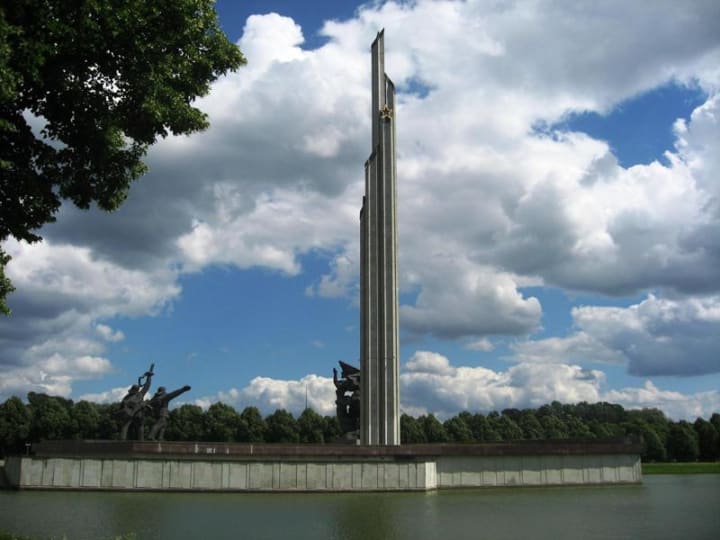
Uzvaras Park or Victory Park is also on the Left Bank. It covers 36.7 hectares and is the largest in Riga.
The idea to build a park on this esplanade came from George Kuphaldt who drew up a plan for it. Lawns, footpaths, clumps of trees, sport fields, a playing area for children and wide avenues bordered by four rows of trees were suggested. Finally in the fall of 1909 the plan was accepted and the following year was the 200th anniversary the incorporation of Riga into the Russian Empire.
Therefore the park was named after Tsar Peter I. When the park opened Tsar Nicholas II came to the celebration with the three princesses Olga, Maria, and Anastasia. They planted oak saplings and were assisted by Armistad and Baron Frederik. Then in 1915, right after Kuphaldt had finished planting Dutch Linden trees along the avenue, he was expelled from the country because he was German. With WWI approaching everything that could be moved right down to the tram tracks was taken to Russia. Residents planted kitchen gardens in the parkland.
Then, in 1923, the park was renamed Uzvaras or Victory Park. On the left side of Barinu Street an area was created for army parades and large-scale festivities. Then is 1938 the 9th Latvian Song Festival was held here. With WW II the kitchen gardens were back and finally disappeared completely by 1950. When 1985 came along came what is still today the dominant feature of this park the monument to the Fallen Soldiers of the Army of the U.S.S.R., Liberators of Riga, and the Latvian S.S.R. from the German Fascist Conquerors. The obelisk’s height is 79 meters. Today those who once celebrated former Communist holidays gather by this monument on those dates to celebrate and remember a time gone by.
Victory Park Skiing
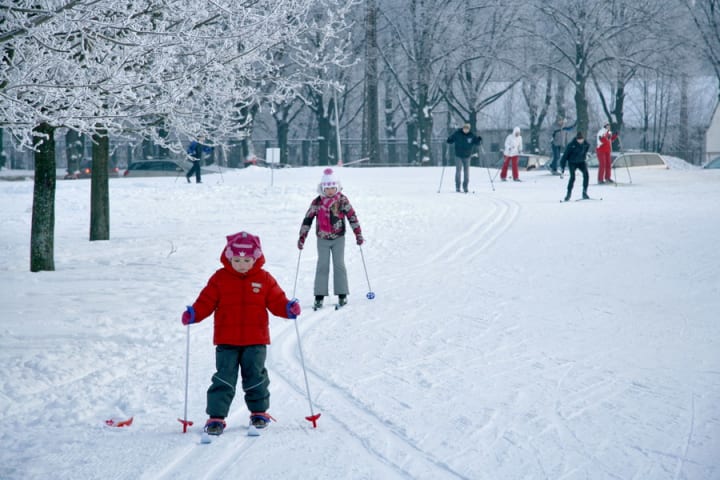
Today in the park you can participate in different winter sports such as skating, cross-country skiing, skiing on small man-made hills and even snowboarding.
About the Creator
Rasma Raisters
My passions are writing and creating poetry. I write for several sites online and have four themed blogs on Wordpress. Please follow me on Twitter.
Enjoyed the story? Support the Creator.
Subscribe for free to receive all their stories in your feed. You could also pledge your support or give them a one-off tip, letting them know you appreciate their work.






Comments
There are no comments for this story
Be the first to respond and start the conversation.